Dear friends and family,
I’ve been in rest and recovery mode after a long and grueling series of climbs on the bike in the heat. Turns out that it takes a few days to recover, not the one or two that I was hoping. I am in a tourist town of 16,000 people called Villa de Leyva. It is only three hours from Bogota, so an easy getaway for weekends or short trips for the city dwellers. It’s been preserved to stay the same for years, so it appears the same as it might have a couple of hundred years ago. I was told that it has over 200 hotels and hostels to accommodate the quantity of tourists who frequent here. I’ll share some pictures of course.
Colombia is a coffee growing country and Colombians love their coffee. It is usually served in a small cup, often plastic, usually super sweet. If I don’t get it at my hotel because I leave before they have prepared it, I can always get a cup at the side of a road from a vendor and his or her thermos. Always. Cost is the US equivalent of twelve cents. Even less than Starbucks from my memory.
My tinto education:
I was looking ahead for hotels at the small towns a day ahead of my arrival there. One place I researched, when I translated Booking.com into English, in the reviews (translated online by Google translate) said that they loved staying at this place because the owners brought a cup of red wine to their room early every morning. I thought this odd, wanting red wine in the morning, so continued to research other alternatives to stay in that town.
Then I researched “tinto” online and found this: Tinto technically means either deep or red in color. In Spain it is used to mean the local deep red wine. In Colombia, it has branched off of the language used in Spain to mean a deep coffee. It is made by putting ground beans into boiling water, then either filtered or served with the grounds left to settle in the bottom. When you finish your tiny cup, there is always a bit of grounds in the bottom.
Aha! So, Google must have translated using the Spain version of tinto and that hotel actually probably brought tinto coffee to the rooms every day. I was finally understanding the language and culture properly, or so I was pretty sure.
About 0930, I arrived at my hostel outside of Togui, a very small town on my way south. It was not a long ride, but a lot of climbing and hot, so I left at 0530 and had ridden (and pushed some uphill) for four hours. I was worn down and ready for a break. I got greeted by the owners who spoke English well and were visiting with other guests who they said, stayed so long they became family.
They asked if they could get me anything before I retired to my room and I asked for a tinto. Leidy, the owner went to the table and poured me a small glass of red wine and brought it to a very confused bike rider-me.
Shit, was all my research wrong? I said, “no, I was asking for coffee” in English now that my spanish had proven to be unsuccessful. Then she of course had to boil me some and proceeded to do so.
As I realized that their English was quite good, I told them the story of my tinto research and new knowledge and how she had confused me and we had quite a good belly shaking laugh together.
Turns out that the other couple had bought this wine and were sampling it with the owners, so it was out and ready to share with me.
I was told by another long distance bike rider that Colombia has two religions: Catholicism and soup!
The soup is served at lunch and dinner and often at breakfast as well. It has been really good, loaded with vegetables (the only way to typically get vegetables), with a big hunk of meat on the bone in the middle. It is for sure the most popular thing to get. If you walk into a country restaurant every person will be having soup.
I enjoy it a lot, so that’s a good fit. Also, I miss the vegetables at my meals, so get them this way. Salads are typically shredded cabbage with a few slices of tomato, the only other regular vegetables served except for potatoes and yucca. I do not order lettuce, even though sometimes available, because it is often washed with non-potable (at least for this gringo) water.
Turns out that yucca (another name for cassava) is a super food. It is full of vitamin C and antioxidants to benefit the immune system and overall health, as well as stimulating the production of white blood sells to fight infections and viruses. Who knew? It has almost no taste, but now that I know it is good for me, I try to eat most of it.
A typical day’s meals might be an arepa and tinto for breakfast (with or without soup) and then the main meal of the day at lunch. It is called “El Tipico” or “platos del dia”, which means either the typical lunch or your plate of the day. So far it is always the same basic meal, with the difference being red meat or chicken.
After the soup, the plate will hold a big chunk of meat, a big scoop of white rice, a small cabbage salad, a nice size chunk of yucca, maybe boiled potatoes, a fried plantain, and even maybe some beans. I have yet not been able to finish a whole lunch, even after four hours of hard riding. A lot of food.
An arepa is any form of cornmeal pastry, often in a triangle, with fillings of eggs, cheese, or ham. It is fried in oil, so hits the stomach hard if one intends on biking immediately after the consumption. If served fresh and hot they are tasty, but after they sit awhile, much less so.
Since this is such a custom and so important in the culture, the restaurants make tremendous amounts of each food and charge very little. It will typically never cost over $4 US. In the country only $1 or so.
Looking around, I see the whole meal consumed by most other customers. I was told that this meal was designed to serve to give energy to the workers in the fields, so they had enough energy to work the remainder of the day. I am usually ready for a siesta after my 80% of the meal.
Dinner might be a snack, but I still see a lot of people eating the same meal as lunch, and consuming it all. I will often order just the soup, which confuses them, since the entire meal is part of the deal and they sometimes insist on bringing me the whole platter of food.
I am a little confused as to how they can consume this much food. I am a big person exercising a lot and can manage only a portion of what I typically see. Maybe it takes training to eat that much.
In tourist towns, like Villa de Leyva, where I am now, there are restaurants of many varieties. Several pizza and pasta places and loads of hamburguesa places. Even the odd sushi and Chinese places. I am enjoying the change even though I do like the tipico food.
Oh, and the drink everyone takes is a lemonade, made with sugar or in this area with unrefined juice of the sugar cane, called panela. Even one person gets a small pitcher of it with lunch.
All this writing about food is getting me hungry. Guess I’ll go find some lunch.
Sending love,
Charley
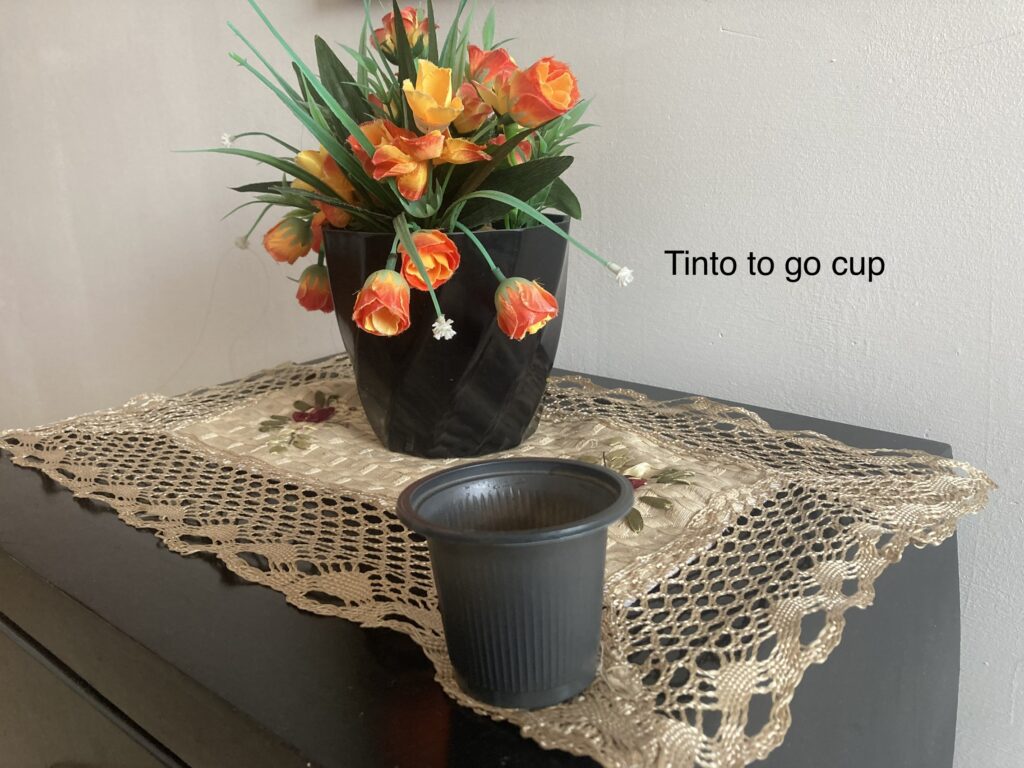

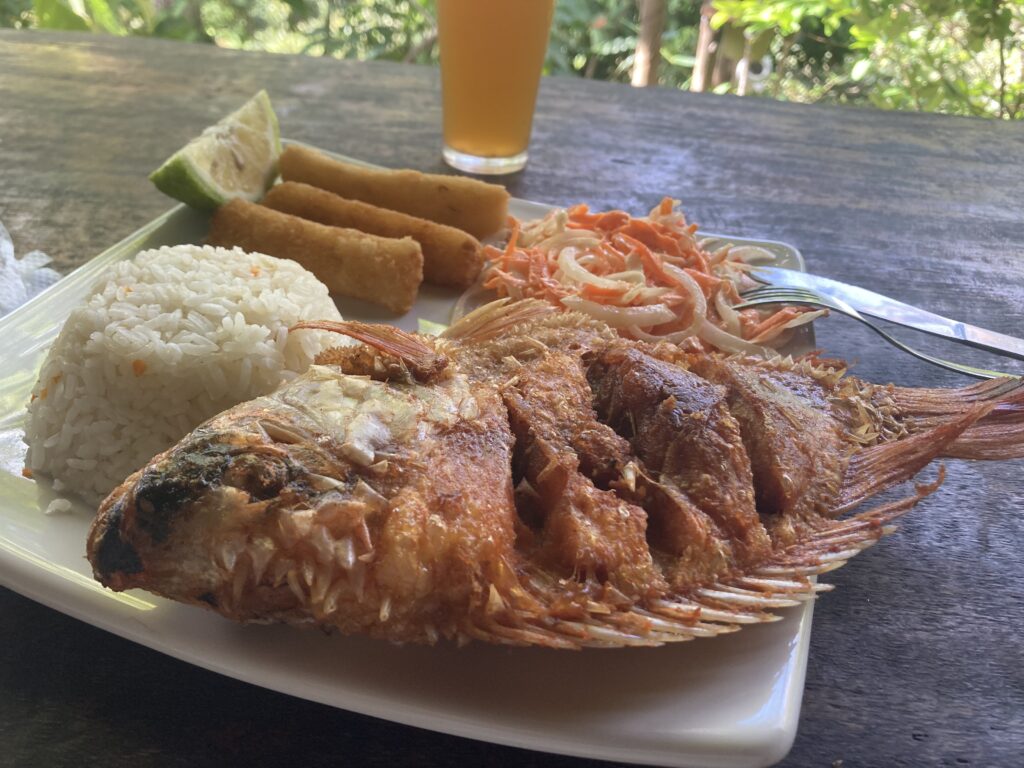
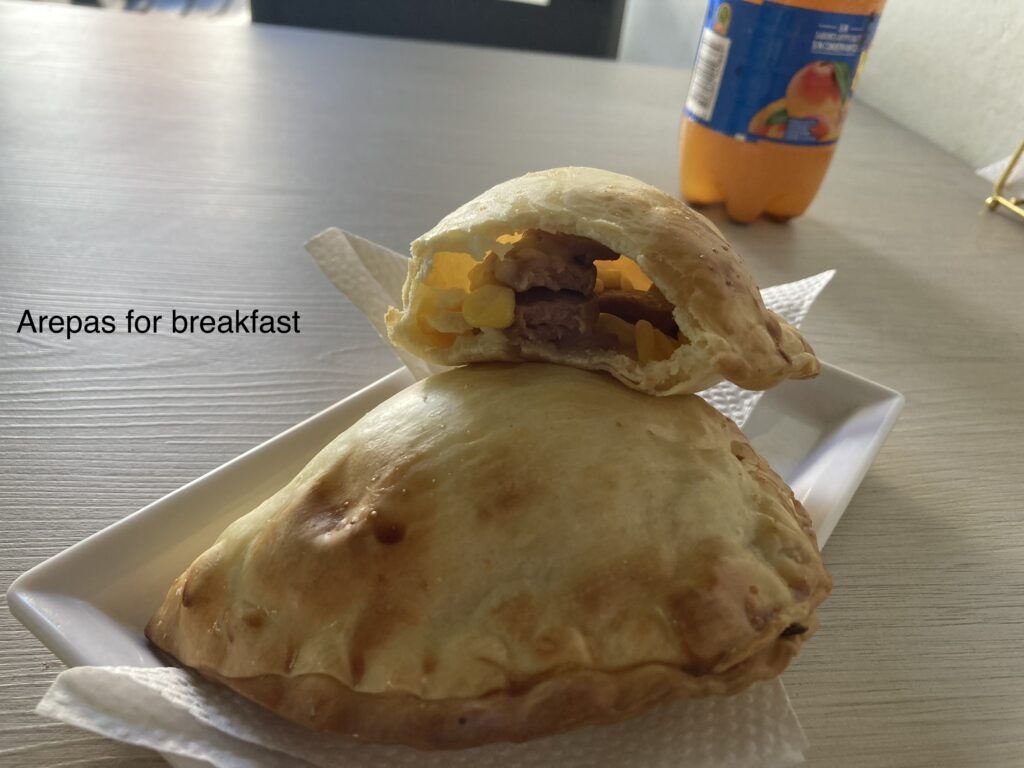
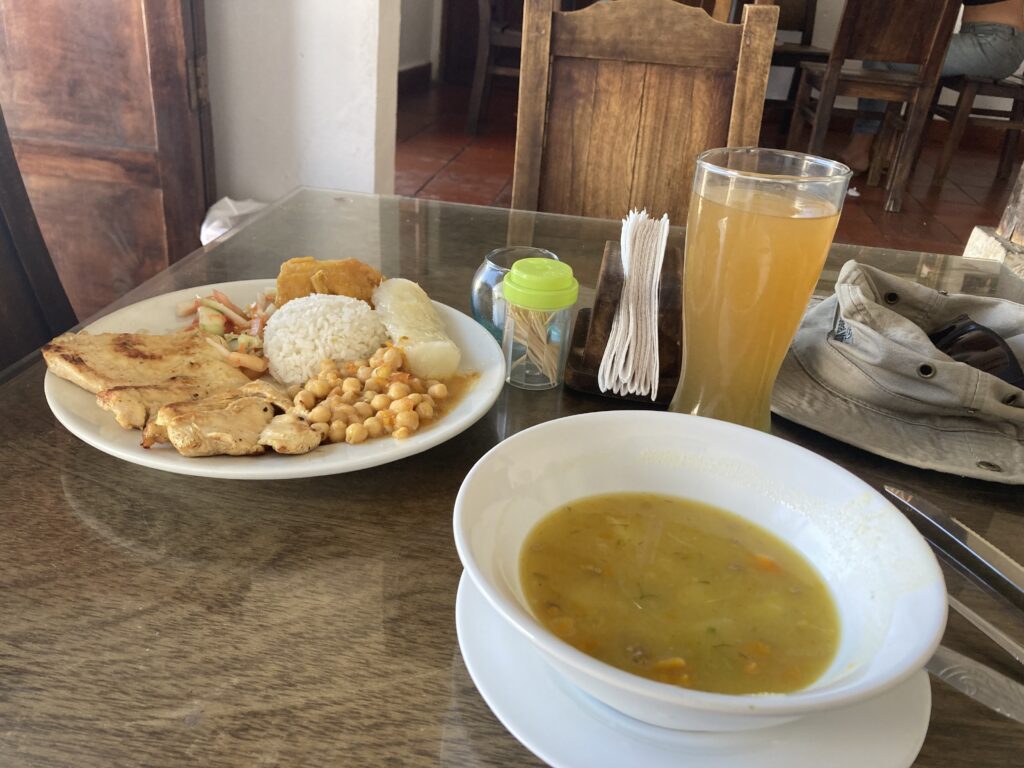
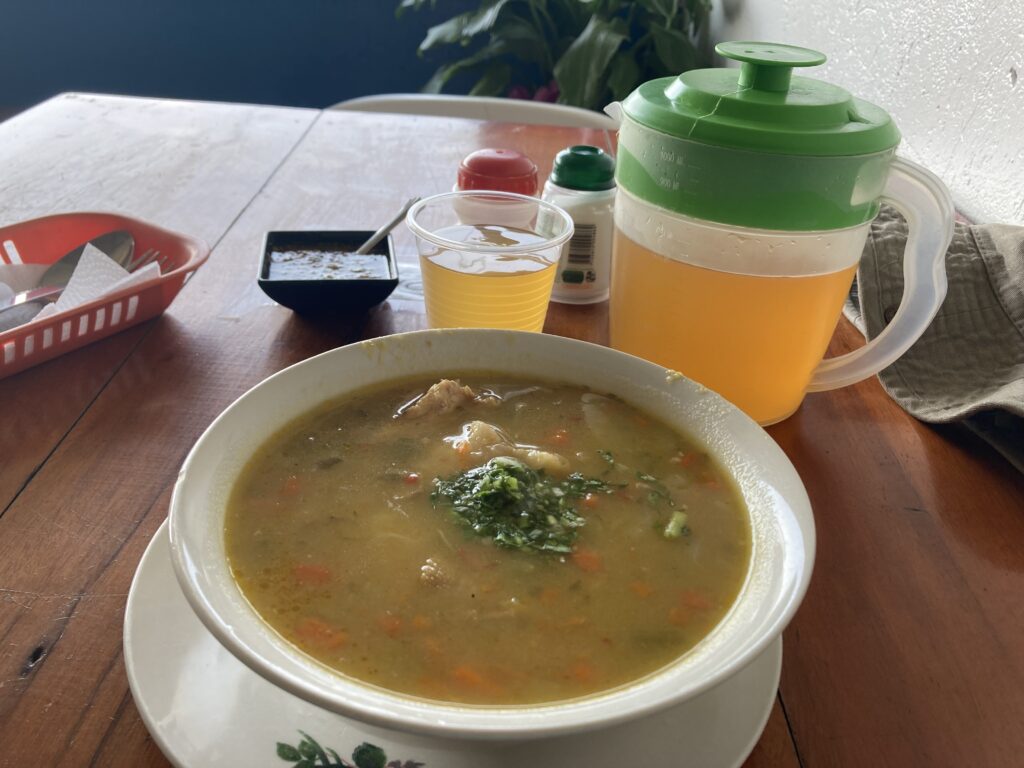

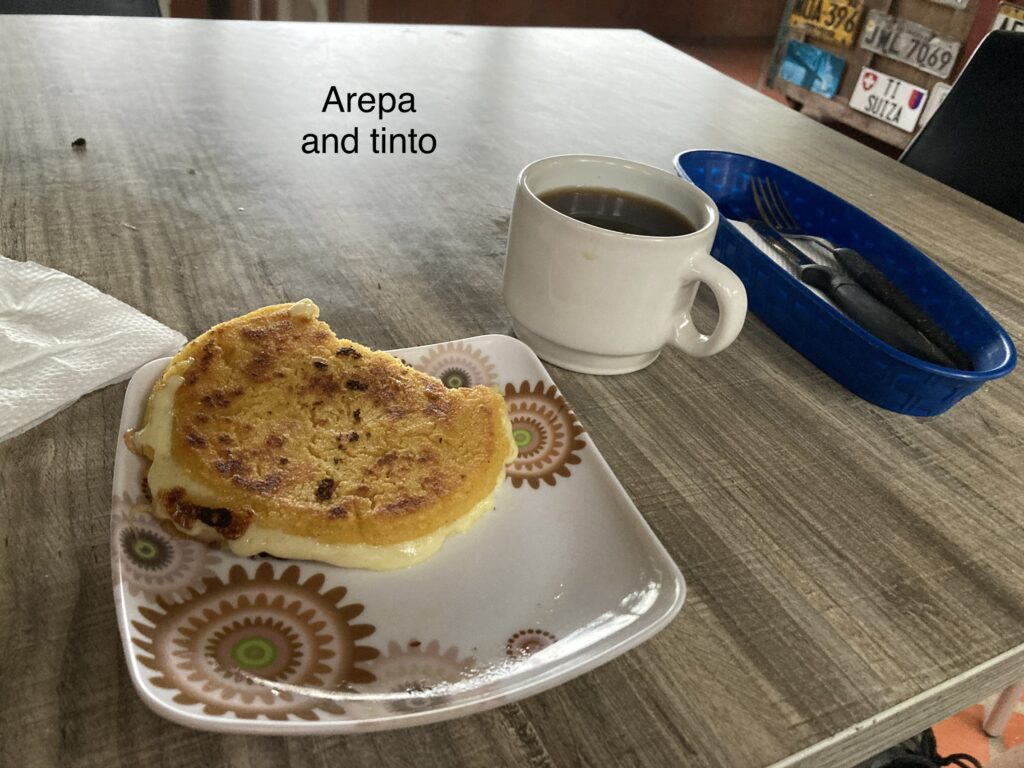
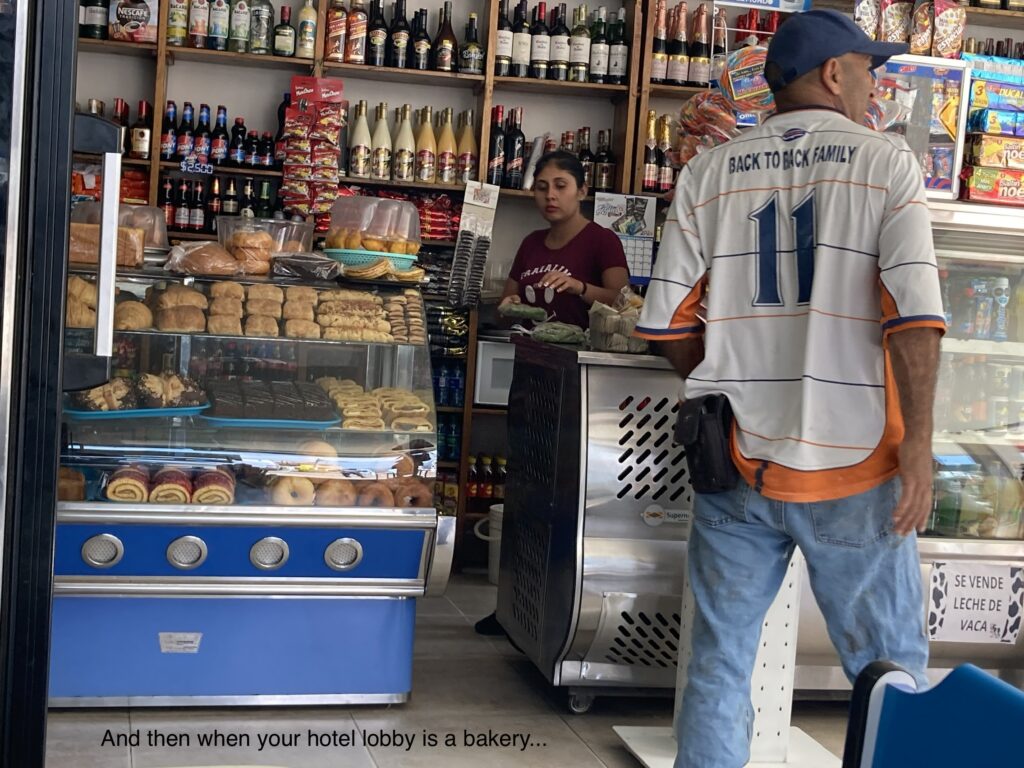

Wonderful travel/food log. Looks so good in the pictures. I continue to marvel at the quality of your adventures.
Peter
Hi Charlie, in the picture labeled “arepas for breakfast” , they are actually called empanadas, which are stuffed with either rice, chicken, shreded beef, mashed potatoes,etc. On the other hand arepas are usually round and flat and they are not stuffed, sometimes there is some cheese in it but not rice or any kind of meat.
Ivan,
Thank you for the clarification. For anyone else reading, Ivan is Colombian and knows what he is talking about.
Charley
This note from Hugo, the French guy that bicycles presently living in Bogota:
Please accept a little precision regarding “arepas” and “empanadas”. Arepas are round fried cornmeal pancakes but are not necessarily filled.
You may ask for “arepa boyacense” which is the typical arepa from the region where you are, with no filling at all. It’s nice to accompany a warm “tinto” or “agua de panela”. The one on your second-to-last picture is “arepa con queso” but you can also order “arepa de huevo”… and much more varieties.
Also, the triangular filled turnover you show on the fourth picture “arepa for breakfast” is not actually an arepa but an “empanada” (not necessarily with cornmeal, it can be wheat flour depending on the place), you will find them everywhere, just ask for the filling to avoid surprises ha ha.
Food looks good, but I imagine it’s nice to get something different now and then. As you say, the soup looks the best.
We are planning a trip to Puerto Rico with Alex, Angela and Arya for spring break, the first week of April. Need to start reviewing my Spanish. How is yours?
So it’s hot again?
Love,
Lynne
Maybe you can just go with “arepañada” to cover all the bases….it all looks sublime.
robin